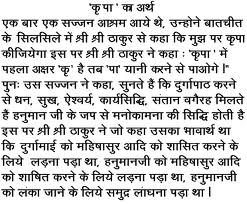
India formally recognizes 18 languages. In turn, most of these 18 languages include a subset dialects and variants. And it is no wonder that Hindi is completely different from many of the dialects with which it coexists.
The Hindu has more than 10 variants, for example, Hindi spoken in Rajasthan is different from that spoken in Bihar or Himachal Pradesh.
Khariboli is one of the most widely spoken dialects, as it is concentrated in western Uttar Pradesh. Khariboli is the variant of Urdu/Hindi used in government and education. Also, most modern literature has been produced in Khariboli.
Another important is the Bambaiya dialect, the “slang” in Urdu/Hindi spoken mainly in Bombay (Mumbai). People from many parts of India coexist in Mumbai, which has led to a fusion and created a language based on Urdu/Hindi but incorporates words and pronunciations from other languages like English, Marathi, Gujarati and other languages of southern India.
The third dialect of importance is Brajbhasa, spoken in the region of Braj. Brajbhasa was the language chosen by the Bhakti movement. And there, most of the literature in this language belongs to Krishna.
Among other variants of Hindi, we can also include Kanauji, Bundeli, Bagheli, Chhattisgarhi (Lahariya or Khalwahi), Hariyanvi (Bangaru or Jatu), Bhaya, and Ghera Chamari Gowli.
Hindi is quite different from English. For example, regarding the order of the components in a sentence. The main difference is that the verbs are at the end of the sentence. For example:
English: subject + verb + object => I learn Hindi
Hindu: subject + object + verb => I Hindi learn
Furthermore, in Hindi inflections all verbs are inflected according to a number of factors such as gender (male, female), number (singular, plural), tense (past, present, future), action (perfect, imperfect, in progress), the degree of respect (private, familiar, formal).
As we always insist, the heart of the matter is not simply “translating” the target language, but rather diving into a different cultural world.
For more information, refer to “Translation Services.”
(Spanish version: https://www.trustedtranslations.com/es/y-en-india-2011-01-12.html)





